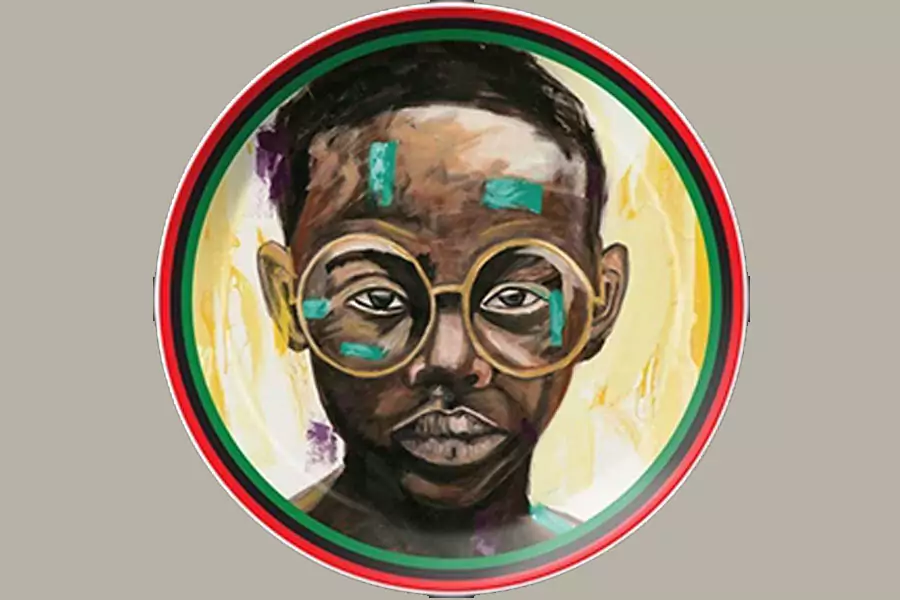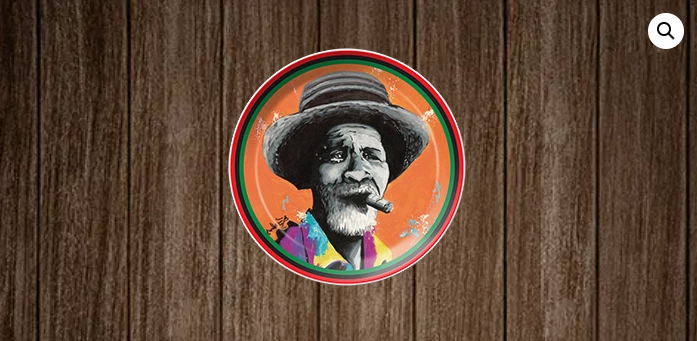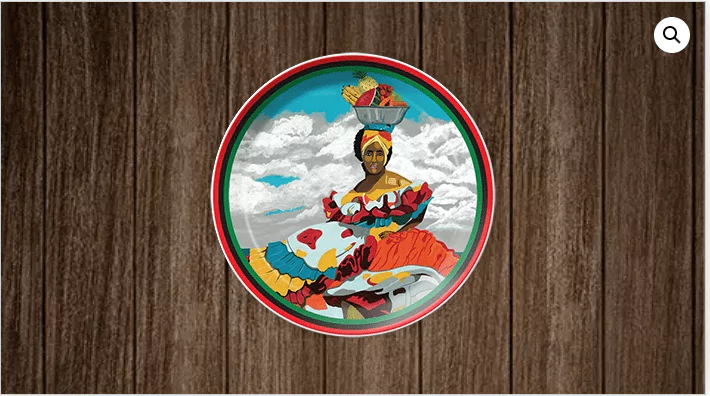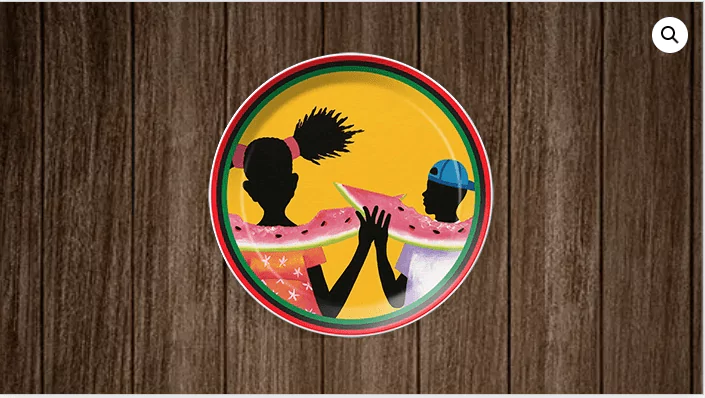Schedule Appointment
Schedule Appointment

Food has never been simply about sustenance in African American life. It’s a metaphor for culture, history, and strength. Through food, African Americans have transmitted stories, kept traditions alive, and created communities. From slavery times to the Great Migration and into the present day, sharing a meal has created a physical and figurative space for connection, healing, and celebration.
Food is interwoven with African American narrative in ways embedded in the community’s history, struggles, and successes. Be it the shared identity formed at a Sunday dinner or the tasty ritual of a cookout, food is a canvas on which memories and experiences are told. Artistic works such as the First Generation College Student plates, Social Hour at the Barber Shop plates, The Fruit Ladies plates, and Summer’s Dreams – Ice Cold Watermelon plates provide rich depictions of this history and continue to narrate the story of Black culture through food.
African American food culture originated in the pain and determination of slavery, during which time food was employed to sustain and perpetuate religious and cultural observance despite oppressive realities. Enslaved Africans could fuse their original cooking traditions with resources to hand and create meals that became synonymous with survival and African American community identity. The cooking process was storytelling—a means of keeping culture and history alive when words alone could not.
For centuries, families have employed food as a language to share their stories. Foods such as fried chicken, collard greens, and cornbread are more than just flavorful—they are filled with the history of survival and ingenuity. These foods are prepared with love and passed down through generations, bearing the ancestors’ memories with them.

The Social Hour at the Barber Shop plates represent the place of food in communal assembly. A barbershop visit is more than a haircut—it’s an occasion to meet, converse, and snack. The barbershop is usually where men (and occasionally women) share ideas, joke, and reminisce. The plate series documents the social nature of the barbershop, where food, conversation, and community intersect. This interactive space contains the vibrancy of Black culture, which is done through tales shared over snacks, refreshments, and the communal feeling of being in a warm atmosphere.
Perhaps one of the most emotive means African Americans have employed food to share stories is through family reunions—especially Sunday dinners. These meals are often a sit-down to break news, chat about life, and pass wisdom from generation to generation. The plates of the First Generation College Students are a definitive cultural benchmark—the gathering of the family to share in the moment of accomplishment of a child achieving a college diploma. It’s not merely being academically successful but overcoming challenges, overcoming odds, and becoming something more.
The symbolism of food during these events is profound. A dish, maybe made by a grandmother at home, may remind a younger generation of their heritage and the sacrifices made to secure their future. The meal itself is a vehicle for the transmission of both concrete recipes and abstract wisdom. The First Generation College Student plates celebrate this type of storytelling in which the achievement of one family member is shared and celebrated by the community as a whole. Such plates typically show the pride, love, and joy that come with such achievements.
At family gatherings or neighborhood barbecues, there’s also a shared element to food that unites the narratives of several generations. Food preparation and consumption is a shared experience in which everyone—regardless of how young or old—has a part to play in narrating the story of who they are and where they are from.
Women have traditionally been the pillar of food traditions in African American communities. The kitchen in many homes is not only a place for cooking—it’s where lessons are learned, memories are created, and culture is shared. The Fruit Ladies plates are a lovely reflection of this role. The plates depict women selling fruits in colorful marketplaces, reflecting a tradition of women as providers, nurturers, and storytellers. In most African American communities, doing “something about bringing food to the table” is also an exercise in gathering people together so they can relive memories and experiences.

Fruit Ladies’ representation on the plates is an eloquent testament to African American women’s collective history of support to both family and community. These women, frequently portrayed as proud and strong characters, symbolize the act of cooking and the broader role women play in maintaining cultural and community existence. Food represents the unity, love, and strength these women bring about through the humble yet deep act of sharing food.
The significance of food is not limited to the kitchen—it also comes into play for freedom and independence celebrations. In the time of slavery, food was a limited resource, but enslaved African Americans managed to celebrate using food during holidays and family reunions. The preparation and sharing of food amidst hardship was a demonstration of resilience and unity.

Summer’s Dreams: Ice Cold Watermelon plates evoke the spirit of summer festivities, in which watermelon—a fruit typically regarded as a classic summer favorite—transcends its mere fruit status. It is freedom and leisure incarnate, reminiscent of summer gatherings with family and friends, picnics, and communal dinners. Watermelon’s sweetness, cooled on a sweltering day, is an instant of relief and freedom—encouraging African Americans to recall the resilience of coming together, communing, and rejoicing even in adversity.
Watermelon, in this context, becomes a means to reclaim an iconic symbol of African American life, imbuing it with dignity and happiness instead of the racial stereotypes that typically surround the fruit. It celebrates freedom and prosperity distinctly rooted in the African American experience.
Food has always played a central role in community building in African American culture. Food is the basis for connection and storytelling, whether through the sacred connection created over a meal at a family reunion, the camaraderie of a Saturday cookout, or the fellowship at a neighborhood barbershop.
The Social Hour plates capture the spirit of this food-based role that brings communities together. Like the kitchen or dining area, the barbershop is a place of confluence where food, conversation, and bonding coexist. The community areas thus become incubators for the tales that establish a collective identity.
In the same way, the Summer’s Dreams – Ice Cold Watermelon plates symbolize times of happiness and communal celebration. These plates embody the carefree joy of summer, where food unites people to unwind, laugh, and bond. Through these experiences, African Americans continue to forge and reinforce the bonds that bind them to each other and their collective cultural heritage.
African American food is so much more than mere sustenance—it conveys stories, history, and people. It’s a link across generations, an affirmation of resilience, and a witness to the strength of the African American narrative. Whether it’s by the symbolism of The Fruit Ladies plates, the pride in First Generation College Student plates, the community-building of Social Hour at the Barber Shop plates, or the joyful freedom captured in Summer’s Dreams – Ice Cold Watermelon plates, food is a potent vehicle for maintaining culture and creating bonds. Through food, African Americans continue to share their stories, honor their heritage, and build community, one meal at a time.